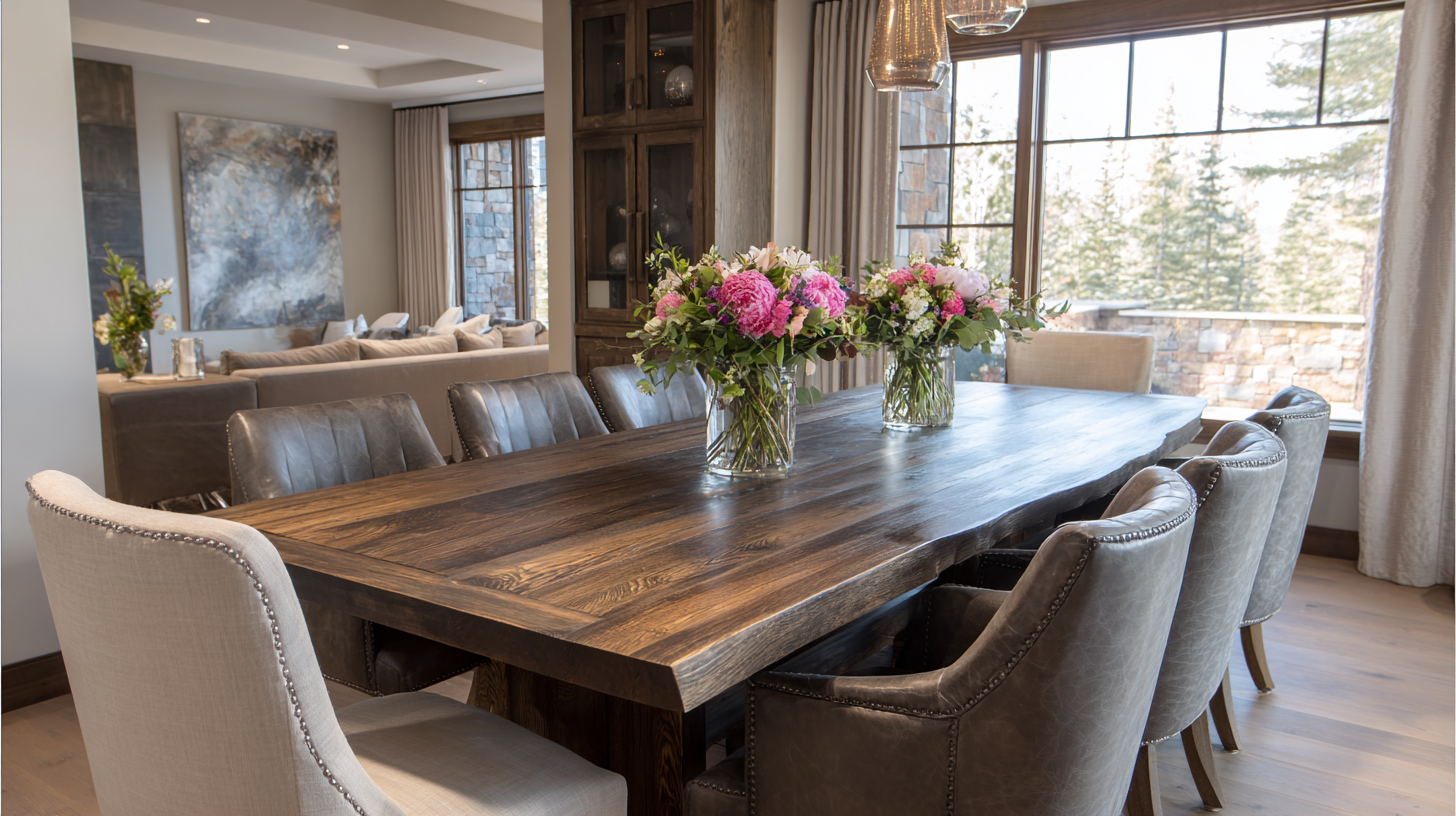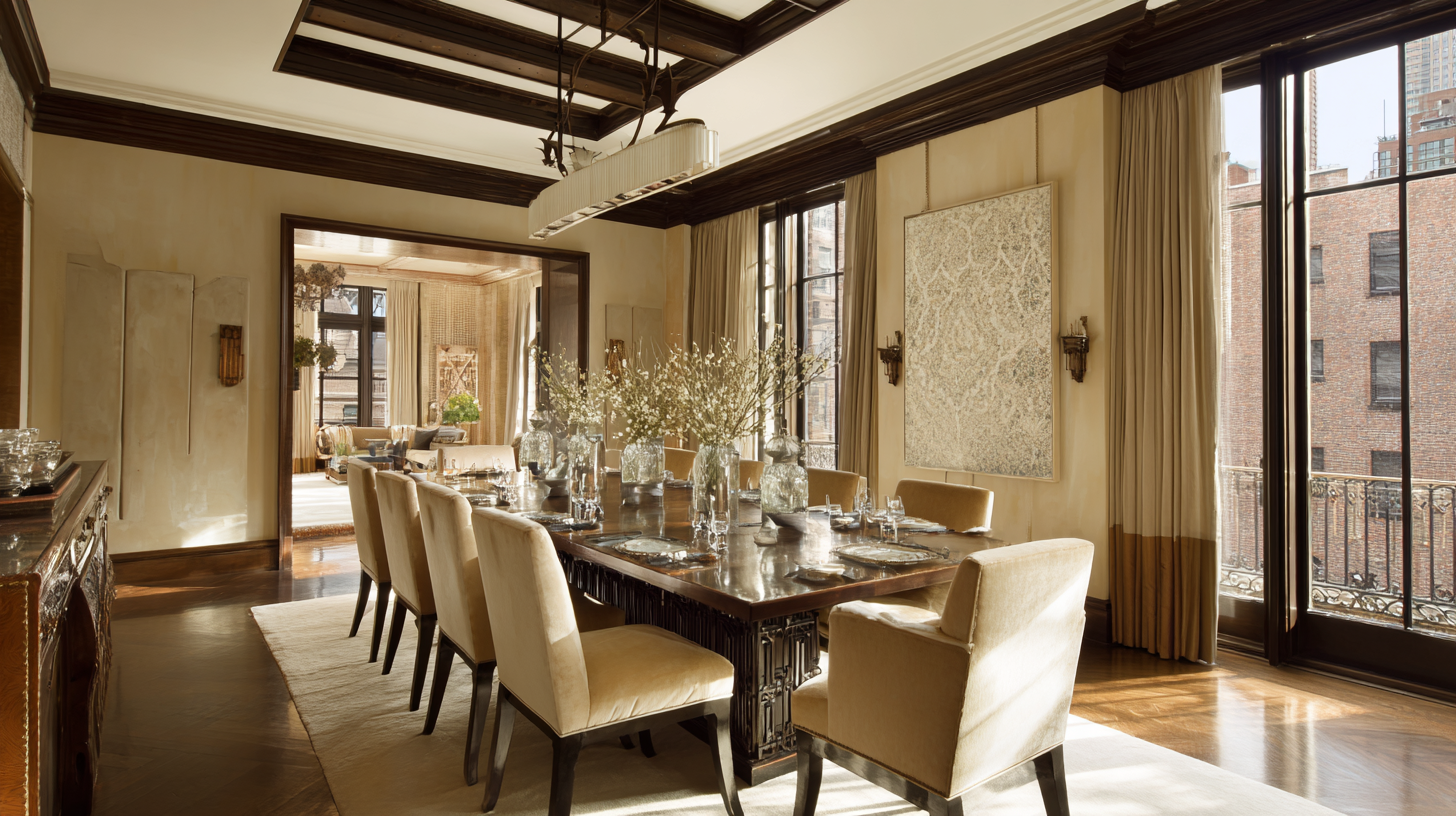What is Dining Room Furniture? Exploring 2023 Trends and Market Insights for Homeowners
In 2023, the realm of dining room furniture is witnessing a dynamic evolution that reflects changing homeowner preferences and lifestyle needs. According to a recent report by the Furniture Today Magazine, the dining room furniture market is projected to reach $21.1 billion by 2025, indicating a growing emphasis on multifunctionality and aesthetic appeal. As more homeowners seek to create inviting and flexible spaces for both dining and socializing, trends such as sustainable materials, custom designs, and innovative seating solutions are gaining traction.

Insights from the National Association of Home Builders reveal that 61% of buyers prioritize spacious dining areas, further emphasizing the importance of thoughtful dining room furniture selections. This article explores the latest trends and market insights, providing homeowners with the essential tips for making informed choices that enhance both functionality and style in their living spaces.
Types of Dining Room Furniture: A Comprehensive Overview
When it comes to dining room furniture, there are several key types that homeowners should consider to create a functional and stylish space. The centerpiece of any dining room is, of course, the dining table. Dining tables come in various styles, from extendable designs that save space to round or square options that offer different aesthetics. Complementing the table are dining chairs, which should not only match the table's style but also provide comfort for family gatherings and dinner parties.
When selecting dining room furniture, pay attention to the material and durability. Solid wood pieces are timeless and sturdy, while modern materials like metal and glass offer a contemporary vibe. Additionally, explore the latest trends in dining room furniture, such as multifunctional pieces that accommodate smaller living spaces, giving you flexibility without sacrificing style.
**Tips:** Always measure your space before purchasing to ensure a proper fit. Consider investing in extendable tables for versatility, especially in smaller areas. Finally, choose colors and styles that reflect your personal taste while harmonizing with the overall design of your home.
What is Dining Room Furniture? Exploring 2023 Trends and Market Insights for Homeowners
| Type of Furniture | Description | Material | Popular Styles (2023) | Price Range |
|---|---|---|---|---|
| Dining Table | Central piece for dining areas, used for meals and gatherings. | Wood, Glass, Metal | Modern, Rustic, Industrial | $200 - $3000 |
| Dining Chairs | Seating options that complement dining tables. | Wood, Upholstered, Plastic | Contemporary, Classic, Scandinavian | $50 - $800 |
| Sideboard | Storage unit for dining essentials like dishes and cutlery. | Wood, MDF, Metal | Vintage, Minimalist | $300 - $1500 |
| Buffet | A low storage unit often used for serving food. | Wood, Glass | Traditional, Modern | $250 - $1200 |
| Dining Room Accessories | Decorative items like centerpieces and table runners. | Varied materials | Bohemian, Elegant | $10 - $300 |
Current Trends in Dining Room Furniture for 2023
As we delve into the current trends in dining room furniture for 2023, it’s clear that homeowners are increasingly leaning towards designs that blend practicality with aesthetic appeal. This year, timeless styles are making a strong comeback. Homeowners are embracing furniture that not only meets contemporary standards but also withstands the test of time. From Scandinavian-inspired pieces to furniture with bold colors and natural materials, the focus is on creating spaces that are both functional and inviting.

Another significant trend is the customization of dining spaces with artful touches. Designers are incorporating heritage wall art and unique lighting features that act as conversation starters. The emergence of multifunctional pieces also reflects the growing need for versatility in dining areas, allowing homeowners to adapt their spaces according to social gatherings or intimate dinners. As we look towards 2024, the anticipation for innovative dining room furniture continues to shape the market, indicating a shift towards designs that prioritize both style and comfort.
Key Materials and Finishes in Dining Room Design
 When designing a dining room, selecting the right materials and finishes is crucial to create a welcoming and stylish environment. In 2023, sustainability continues to be a top trend among homeowners, with a significant 65% of consumers indicating a preference for eco-friendly materials, according to a recent industry survey. Popular choices include reclaimed wood, bamboo, and materials that are sustainably sourced, which not only enhance the aesthetic but also contribute to a greener home.
When designing a dining room, selecting the right materials and finishes is crucial to create a welcoming and stylish environment. In 2023, sustainability continues to be a top trend among homeowners, with a significant 65% of consumers indicating a preference for eco-friendly materials, according to a recent industry survey. Popular choices include reclaimed wood, bamboo, and materials that are sustainably sourced, which not only enhance the aesthetic but also contribute to a greener home.
To elevate the dining experience, finishes play a vital role. Matte and satin finishes are trending this year, providing a sophisticated look while being practical for everyday use. Metallic accents, such as brass or gold, are also making a comeback, adding a touch of elegance. Homeowners are encouraged to mix these finishes for added depth; for instance, pairing a rustic wood table with sleek metal chairs can create a striking focal point.
Tips: When selecting materials, consider durability as well as appearance to ensure your dining room withstands daily use. Opt for washable fabrics for upholstered chairs, and always test finishes in natural light to see how they complement your space. Embrace the mix of modern and traditional elements to reflect your personal style while staying aligned with current design trends.
Choosing the Right Dining Table: Size, Shape, and Style Considerations
When choosing the right dining table for your home, several factors come into play, including
size,
shape, and
style considerations.
The size of the dining table should be proportionate to the dining area, allowing enough space for movement around it.
A general rule of thumb is to leave at least
36 inches
between the table and the walls or other furniture to ensure comfortable access.
Additionally, consider the number of people you intend to accommodate regularly; a larger table may be necessary for family gatherings,
while a smaller table might be sufficient for everyday use.
The shape of the dining table can significantly affect both the aesthetic and functionality of the space.
Round tables encourage conversation and are often ideal for smaller spaces, creating an intimate setting.
On the other hand,
rectangular tables
provide more surface area and work well in larger dining rooms.
When it comes to style, homeowners can choose from various materials and designs, from
modern minimalist
to
rustic farmhouse styles.
Ultimately, the right dining table should reflect your personal taste while meeting the practical needs of your household.
Market Insights: Consumer Preferences and Buying Trends in Dining Room Furniture
In 2023, the dining room furniture market has shown remarkable evolution, driven by shifting consumer preferences. According to a recent report by Allied Market Research, the global dining room furniture market size is expected to reach $23.5 billion by 2027, demonstrating a CAGR of 4.5% from 2020 to 2027. Homeowners are increasingly prioritizing versatility and craftsmanship, favoring multipurpose furniture that complement their expanding lifestyles. The rise of remote work has shifted the focus towards creating multifunctional spaces that can serve as both dining areas and home offices.
Additionally, sustainability has become a central theme in consumer buying trends. A survey by Statista revealed that 68% of consumers prefer eco-friendly materials, prompting manufacturers to diversify their offerings to include sustainable woods and recyclable materials. As homeowners seek to create more personalized and environmentally conscious spaces, trends such as minimalist designs and organic shapes are gaining traction. This is evident in a noticeable preference for handcrafted pieces that reflect individual style, as reported in the 2023 Home Furnishings Trends report by the American Home Furnishings Alliance. Brands that align with these preferences are likely to thrive in this evolving market landscape.



